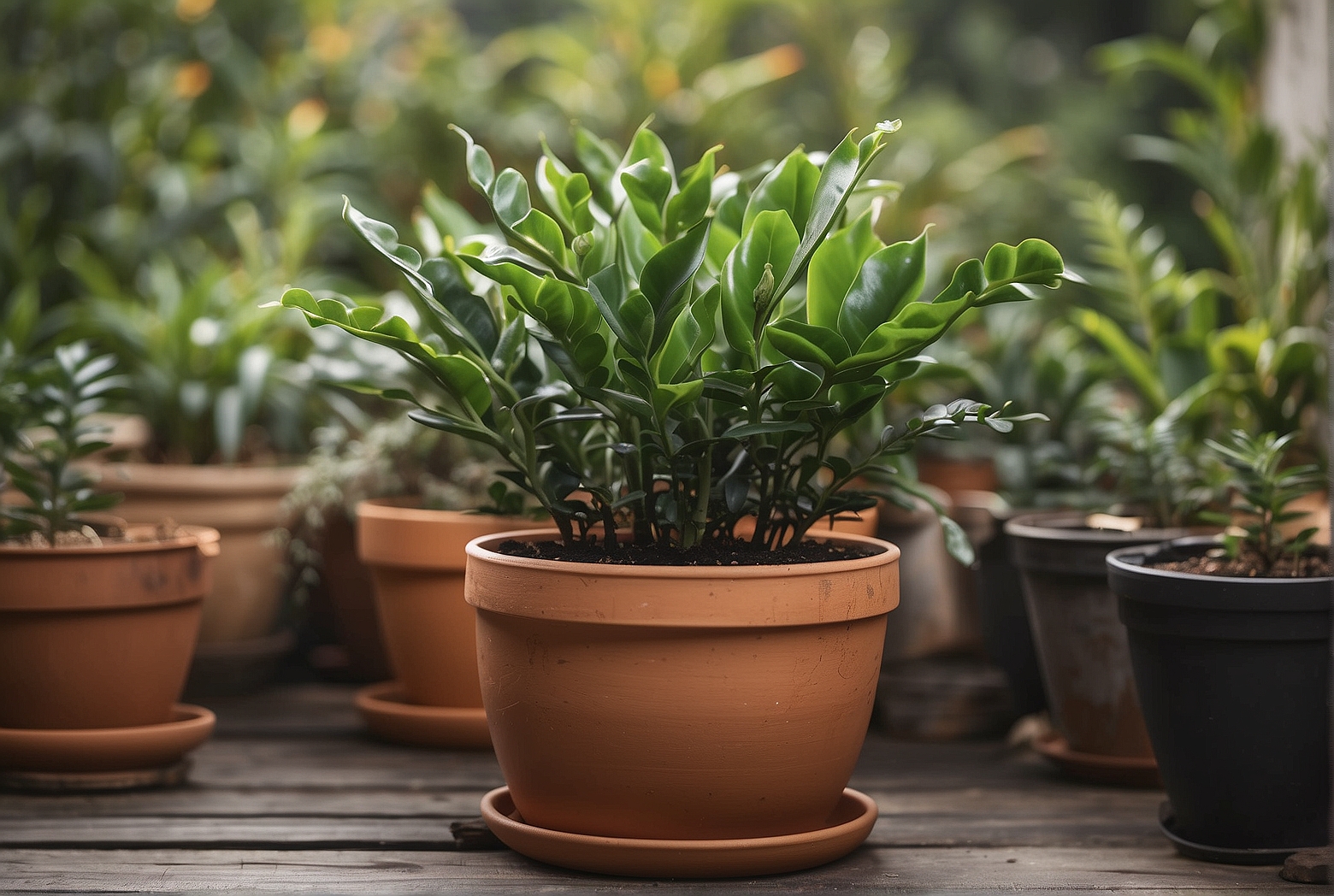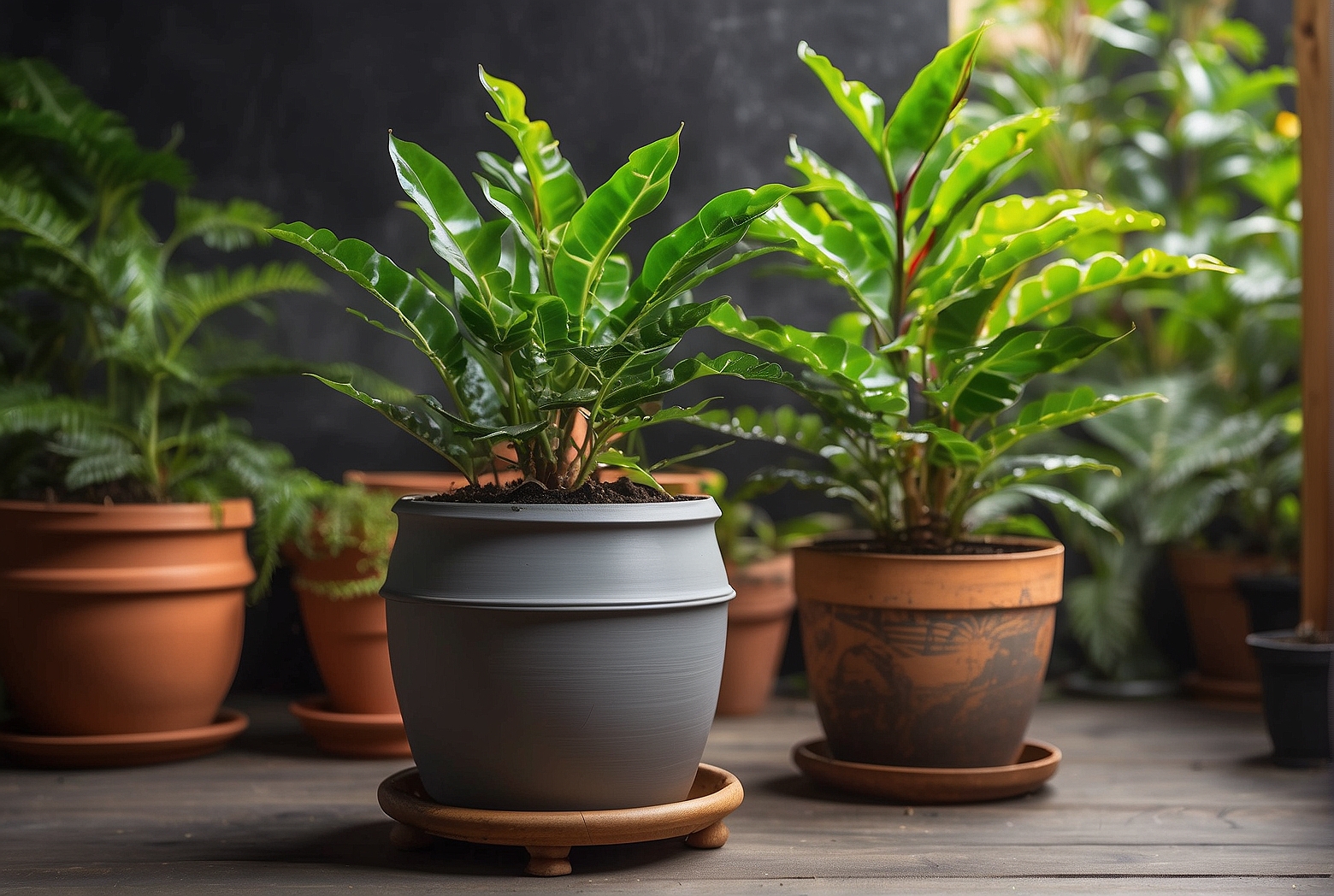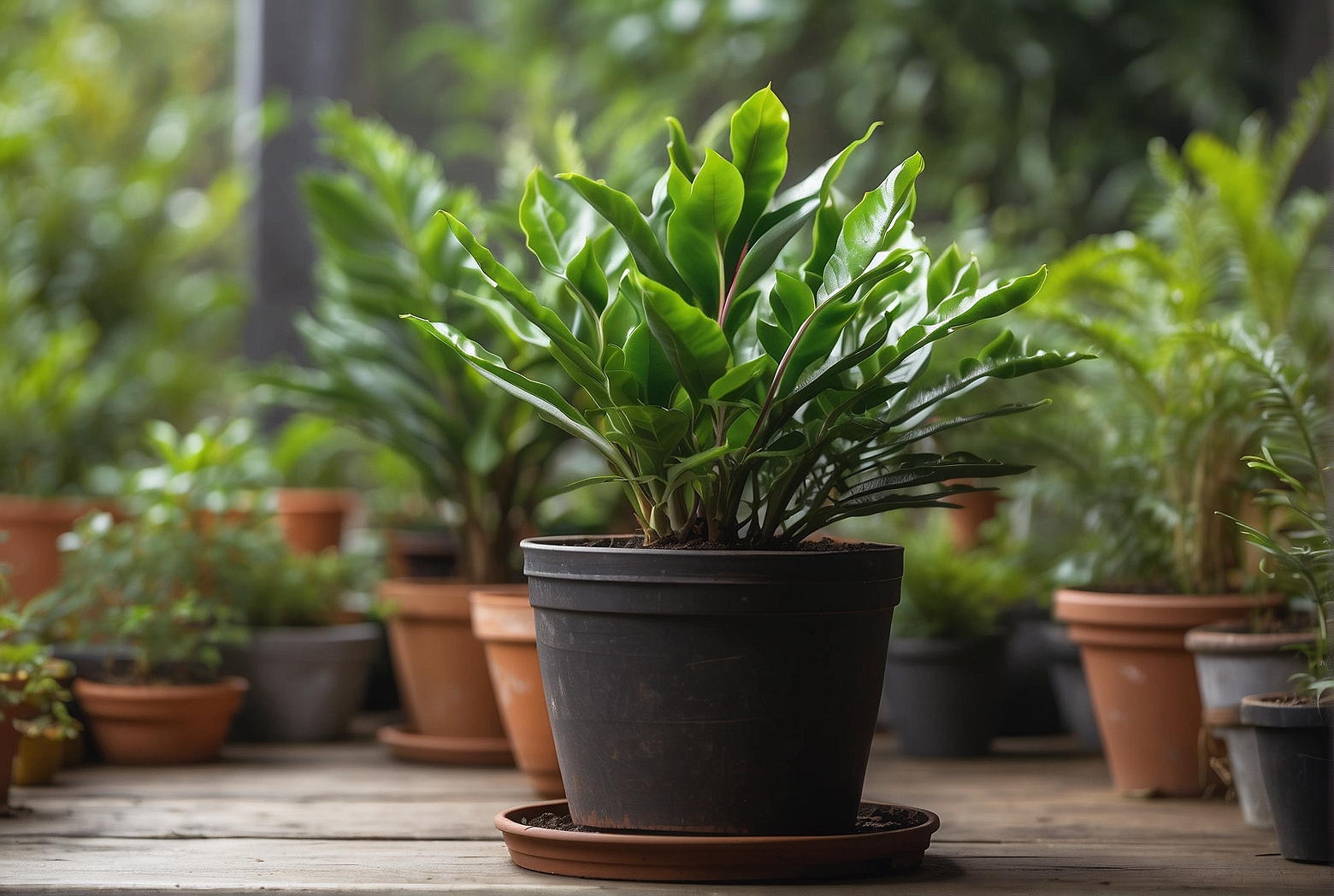Last Updated on April 2, 2024 by Tony Manhart
Are you a proud owner of a ZZ plant or considering getting one? If so, you may be wondering about the best watering schedule to keep your ZZ plant thriving and healthy. Well, look no further! In this article, we will explore the ideal watering routine for ZZ plants, ensuring that you can provide your green companion with just the right amount of hydration it needs to flourish. Say goodbye to overwatering or underwatering woes and say hello to a beautiful, vibrant ZZ plant that will be the envy of all.
Factors to Consider
Environmental conditions
When determining how often to water your ZZ plant, it is important to take into account the environmental conditions it is in. Factors such as the temperature, humidity, and amount of sunlight can all affect the plant’s water needs. If you live in a hot and dry climate, your plant may require more frequent watering compared to if you live in a cooler and more humid environment.
Plant age
The age of your ZZ plant can also influence its watering schedule. Younger plants typically have smaller root systems and are more susceptible to drying out quickly. Therefore, they may need to be watered more frequently. As the plant matures and develops a larger root system, it can withstand longer periods between watering.
Pot size and material
The size and material of the pot your ZZ plant is in can impact how often you should water it. Plants in smaller pots tend to dry out faster as their root systems have less room to spread. On the other hand, plants in larger pots may retain moisture for longer periods. Additionally, pots made of porous materials like terracotta can allow water to evaporate more quickly, requiring more frequent watering.

Root health
The health of your ZZ plant’s roots is crucial in determining its watering needs. If the roots are damaged or unhealthy, they may struggle to absorb water efficiently. In this case, you may need to adjust your watering frequency to accommodate for the plant’s compromised root system. Regularly inspecting the roots for any signs of rot or disease and taking appropriate measures can help maintain the plant’s overall health.
Signs of Underwatering
Yellowing leaves
One of the most common signs of underwatering in ZZ plants is the yellowing of leaves. When the plant does not receive enough water, it starts to conserve resources by sacrificing older leaves. If you notice yellowing leaves, particularly starting from the bottom of the plant, it may be an indication that your ZZ plant needs more water.
Drooping or wilting
Another telltale sign of underwatering is when your ZZ plant’s leaves start to droop or wilt. This is the plant’s way of showing that it is not receiving sufficient water to maintain turgidity. The leaves may appear limp and lifeless, but they can recover once adequately watered.
Leaf curling
If your ZZ plant’s leaves start to curl or fold inward, it could be a sign of underwatering. Curling leaves is a self-protective mechanism that helps the plant reduce water loss through transpiration. If the curling is accompanied by a dry soil, it is important to water your plant promptly.

Dry soil
Dry soil is a clear indicator that your ZZ plant is not getting enough water. Check the soil regularly by inserting your finger about an inch deep into the substrate. If it feels dry, it’s an indication that your plant needs watering. However, it is important to strike a balance and avoid waterlogging, as excessive moisture can also harm the plant.
Signs of Overwatering
Yellowing lower leaves
When ZZ plants are overwatered, the lower leaves are usually the first to show signs of distress. They may turn yellow, become soft, and eventually droop or fall off. Overwatering causes root saturation and limits oxygen availability, leading to these symptoms.
Soft or mushy stems
Overly wet soil can cause the stems of your ZZ plant to become soft or mushy. This is a result of the roots being constantly in contact with excess water, which can lead to root rot. It is crucial to address overwatering promptly to prevent further damage to the plant.
Root rot
Root rot is a common consequence of overwatering. Excessive moisture in the soil creates a favorable environment for fungal and bacterial growth, which can attack the plant’s roots. If you notice a foul smell emanating from the soil or observe black, mushy roots, it is likely that your ZZ plant is experiencing root rot.
Foul odor
Overwatering can also result in a foul odor emanating from the soil. This odor is often caused by the decomposition of organic matter due to excessive moisture. If you detect a musty or rotten smell near your ZZ plant, it is essential to address the overwatering issue and take steps to improve drainage.
Watering Frequency for ZZ Plants
General guidelines
While watering requirements can vary depending on individual circumstances, there are some general guidelines to follow when determining how often to water your ZZ plant. As a starting point, it is advisable to water the plant every 2-3 weeks. However, it is crucial to let the soil dry out partially between waterings to prevent overwatering.
Adjusting based on seasons
Seasonal changes can significantly impact your ZZ plant’s water needs. During the active growing seasons of spring and summer, the plant may require more frequent watering as it is actively utilizing water for growth. On the other hand, during the dormant periods of fall and winter, the plant’s water requirements decrease, and less frequent watering may be necessary.
Monitoring soil moisture
Regularly monitoring the moisture level of the soil is key to determining when to water your ZZ plant. As mentioned earlier, you can use the finger test by inserting your finger into the soil to assess its moisture level. If the top inch of soil feels dry, it is usually an indication that the plant needs watering.
Using a moisture meter
For a more precise measure of soil moisture, you may consider using a moisture meter. These handy devices can provide you with accurate readings of the moisture level at different depths within the soil. By using a moisture meter, you can ensure that you are watering your ZZ plant when it truly needs it and avoid any guesswork.
Watering ZZ Plants in Different Seasons
Spring and summer
During the spring and summer months, when your ZZ plant is actively growing, it is essential to adjust your watering frequency accordingly. The warmer temperatures and increased sunlight result in higher transpiration rates, leading to increased water needs for the plant. It is advisable to water your ZZ plant slightly more frequently, approximately every 1-2 weeks, during this period.
Fall
As fall approaches and the days become shorter, your ZZ plant’s growth rate slows down. During this dormant period, it is important to reduce your watering frequency to avoid overwatering. Monitor the soil moisture regularly and water only when the top inch of soil feels dry. Typically, watering every 2-3 weeks should be sufficient.
Winter
In winter, your ZZ plant enters a state of dormancy, where its growth significantly slows down. During this time, it is crucial to reduce watering even further. The reduced light levels and cooler temperatures result in reduced water requirements for the plant. Watering every 3-4 weeks or even longer intervals, depending on the environmental conditions, should be suitable for your ZZ plant during winter.
Watering Methods
Top watering
Top watering is the most commonly used method for watering ZZ plants. Simply pour water directly onto the soil surface until it starts to flow out of the drainage holes at the bottom of the pot. This method allows the water to reach the roots effectively and helps flush out any accumulated salts.
Bottom watering
Bottom watering involves placing your ZZ plant’s pot in a shallow tray or saucer filled with water and allowing the roots to absorb the moisture from the bottom up. This method can be useful for plants in larger pots or those that have a more extensive root system. However, it is important to avoid leaving the pot sitting in water for extended periods, as it can lead to waterlogging.
Soaking
Soaking your ZZ plant involves completely immersing the pot in a container of water for a short period. This method allows the plant to absorb water rapidly and can be particularly useful if the soil has become extremely dry. After soaking, allow the excess water to drain out before placing the pot back in its designated spot.
Misting
While misting is not a primary method of watering for ZZ plants, it can be useful in increasing humidity levels around the plant. ZZ plants prefer higher humidity levels, and misting the leaves occasionally can help meet this need. However, misting alone is not sufficient to adequately hydrate the plant, so it should be used in conjunction with proper watering methods.
Watering ZZ Plants in Different Pot Sizes
Small pots
Plants in small pots have limited soil volume, which means they have a smaller water reservoir. As a result, the soil in small pots tends to dry out faster, requiring more frequent watering. Keep a close eye on the soil moisture and water whenever the top inch feels dry. Depending on the environmental conditions, small ZZ plants may need to be watered every 1-2 weeks.
Medium pots
Medium-sized pots provide a bit more soil volume, allowing for better water retention. However, the soil in medium pots can still dry out within a reasonable timeframe. It is recommended to water ZZ plants in medium pots when the top inch of soil feels dry, usually every 2-3 weeks. Adjust this frequency based on the specific needs of your plant and environmental conditions.
Large pots
Plants in larger pots have more soil volume, which means they retain moisture for longer periods. While this can be beneficial in reducing watering frequency, it is important not to overwater ZZ plants in large pots. Monitor the soil moisture carefully and water only when the top few inches of soil are dry. Typically, ZZ plants in large pots may only need watering every 3-4 weeks or longer.
Tips for Proper Watering
Finding the right balance
Proper watering is all about finding the right balance. Avoid the extremes of underwatering and overwatering, as both can have negative effects on your ZZ plant’s health. Pay attention to the plant’s needs and adjust your watering frequency accordingly. Remember that it is better to slightly underwater than overwater, as ZZ plants can tolerate short periods of drought.
Avoiding waterlogging
Waterlogging occurs when the soil is consistently saturated with water, depriving the plant’s roots of oxygen. To avoid waterlogging, make sure your ZZ plant’s pot has proper drainage holes to allow excess water to escape. Additionally, avoid leaving your plant sitting in a saucer or tray filled with water for extended periods.
Allowing for proper drainage
Good drainage is essential for ZZ plants to thrive. Ensure that your plant is potted in well-draining soil and that the pot has enough drainage holes. This will prevent water from pooling at the bottom of the pot and allow excess moisture to be flushed out. Proper drainage is crucial in preventing root rot and other water-related issues.
Using well-draining soil
Using a well-draining soil mix is essential for the overall health of your ZZ plant. A mix consisting of equal parts of regular potting soil, perlite, and coarse sand is often recommended. This combination ensures that excess water can drain away from the plant’s roots while still retaining enough moisture for healthy growth.
Common Mistakes to Avoid
Overwatering
One of the most common mistakes when caring for ZZ plants is overwatering. It is important to remember that ZZ plants are highly tolerant of drought and prefer to dry out between watering. Overwatering can lead to root rot, yellowing leaves, and other issues. Always prioritize proper watering practices and avoid excessive moisture.
Underwatering
While overwatering is a common mistake, underwatering can also negatively impact your ZZ plant’s health. Neglecting to water your plant when it needs it can lead to dehydration, wilting, and stunted growth. Be attentive to the signs of underwatering and regularly check the soil moisture to ensure your plant is adequately watered.
Ignoring signs of distress
ZZ plants are excellent at signaling when something is amiss. It is important not to ignore the signs of distress, such as yellowing leaves or drooping stems. These signs often indicate water-related issues and should prompt you to adjust your watering practices accordingly. By paying attention to your plant’s signals, you can prevent further damage and keep your ZZ plant healthy.
Using the wrong potting mix
The choice of potting mix can significantly impact your ZZ plant’s water retention and overall health. Using a heavy or poorly draining soil mix can lead to waterlogging, root rot, and other issues. Always opt for a well-draining soil mix specifically formulated for indoor plants, or create your own mix using the recommended components.
Conclusion
Maintaining a regular watering schedule is crucial for the health and well-being of your ZZ plants. By considering factors such as environmental conditions, plant age, pot size and material, and root health, you can determine the optimal watering frequency. Pay attention to the signs of both underwatering and overwatering, and adjust your watering practices accordingly. Remember to find the right balance, ensure proper drainage, and use well-draining soil. By observing and responding to your plant’s needs, you can keep your ZZ plant happy and thriving.
Tony Manhart is a passionate gardener who has been tending to gardens for over 20 years. He takes pride in creating beautiful outdoor spaces with plants, trees, and shrubs that can thrive in any environment. He loves to share his knowledge with others and has taught classes on gardening basics and advanced techniques. He is committed to sustainability, using natural and organic methods to create and maintain gardens. He also works with local organizations to create green spaces for communities. When he’s not gardening, Tony enjoys hiking, reading, and spending time with his family.


